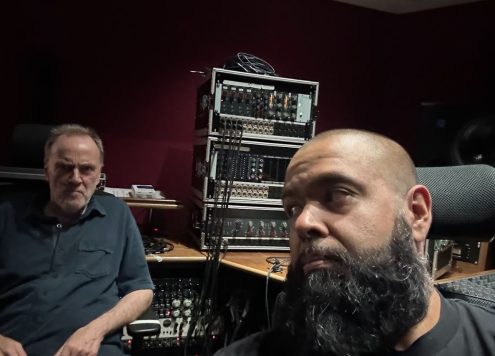HELLBLADE: SENUA’S SACRIFICE (Ninja Theory) PS4, Steam
From the very first moments, Hellblade: Senua’s Sacrifice grabs your attention and never lets it go. As you take control of Senua she becomes so much more than a video game character, making every button you push an intense ordeal as you feel everything from her vantage point. Never has a video game been so visceral, hallucinatory or schizophrenic as Hellblade. It truly is an incredibly unique game.
You begin the game on a canoe traversing through a striking hellscape land filled with hanging bodies and foreboding music, as well as a cacophony of external and bodiless voices telling Senua that she is making a terrible mistake. We come to find out that Senua has suffered a great loss and is traveling through a Nordic mythological based landscape to try and find redemption and communicate with the dead. All along the way the voices she hears only intensify. These voices will be your companion throughout the game and will have you second guessing every move you make and whether or not you want to continue. As the game progresses you discover that Senua has severe mental illness and believes these internal voices to be real, as well as having vivid hallucinations that transform the idyllic surroundings of the game into treacherous and dark places.

Hellblade’s gameplay is broken down into three key components: storytelling, combat and puzzle solving. The storytelling is some of the best you’ll find in video games. You are drawn in emotionally and truly experience the world as Senua in a way that most games cannot accomplish. This is largely done by integrating cut scenes into actual gameplay in a hallucinatory way, as if you are transported to a living memory in that moment. It really is remarkable.
This storytelling combined with the combat system raises the stakes exponentially. Combat always follows a hallucination from Senua and the landscape of the game is severely altered. Also, if you die in combat a rot appears on Senua’s arm and grows up her arm each time you die. There are no save points and no way to go back to past parts of the game and if the rot grows all the way up your arm and reaches your brain the game ends and you are forced to start over at the beginning. Caring so much about the character and facing the possibility of making her fail at the mission she is setting out on amps up tension and makes the combat sequences more and more meaningful and intense as the game goes on.

If the game falters anywhere it may be in the puzzle solving sequences of the game. These sequences are not bad by any means, they just become repetitive over the course of the game. Most often you are solving environmental puzzles by exploring different areas of this world and trying to piece together different components that will open locked doors. If you enjoy these types of environmental puzzles then this will not be a hindrance; however, over time it could definitely feel redundant.
Overall Hellblade: Senua’s Sacrifice is unlike any game currently available. The game takes around eight hours of gameplay to beat, but the strength of story and character make for high replayability. It takes you on a wonderful and meaningful emotional journey that really puts you inside the mind of its main character. The connection you form with Senua makes every component of the game matter so much more and the reality that you may fail her and cause her to not complete her mission ramps up the tension greatly. It is one of the most unique game-playing experiences you are likely to have. (Ninja Theory) by Brian LaBenne










Social Media